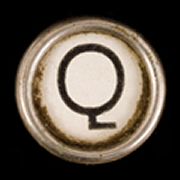
We were both still feeling pretty dusty from the night before when boarded the bus at 6:45am. As we drove away we said a sleep deprived goodbye to Phnom Penh. Having heard a couple of horror stories about the Cambodian/Laos border crossing we had plumped for an international bus that would take us to southern Laos in one hit.
The border crossing ten hours later provided a fitting farewell to Cambodia. The border officials promptly lost my passport. Unperturbed, they continued extorting bribes from other travelers in earnest. My passport and I were reunited about an hour later after it was delivered via moto courier, apparently it had gone on a little adventure five hundred metres up the road to the Laos border crossing. With the formalities out of the way we boarded the bus again. At Ban Thakho we changed buses and headed for the river. Three metres off the highway we hit our first pothole and broke the rear left shock spring. An hour and three bone-rattling kilometres of track later and we knew we were in Laos.
The trip was well worth it. Across the river the sun was setting over the many shores of Si Phan Don (Four Thousand Islands). By the time we had boarded the longboat and began navigating the canals the air was alive with sounds of the early evening dark.
An archipelago of constantly shifting sandbars and rocky islands, Si Phan Don moves with the Mekong flows. But there are a number of permanent settlements, the largest is to the north on Don Khong but we were headed for the less developed southern islands of Don Det and Don Khon.
After we were all ushered off the boat and stood on the riverbank in collective confusion brought about by the language barrier and darkness. We quickly deduced that we were on Don Khon much to the horror of a number of our fellow travelers. While the two islands are joined by an old French railway bridge Don Det has the more lively backpacker scene of the two. By night Don Khon is relaxed and quiet. That was exactly what Amy and I were looking for so we wandered off into the dark and soon settled on a guesthouse.
The following morning we set about exploring the charming little island with bikes. First stop was the impressive cascading falls of Tat Somphamit. We then rode down to the southern most tip of the island, where at the bottom of a rocky trail sit a couple of shack restaurants and a long sandy beach with a distinctly misplaced feel to it. We found a secluded place on the riverbank and set up for a spot at dolphin watching. A rare species of fresh water dolphin, the Irrawaddy, thrall the waters there. While we both proved to be abject failures as dolphin spotters, we swam, sunned ourselves and enjoyed the reserved beauty.
Don Det and Don Khon is the type of place that attracts a diverse mix of traveler types. Riding around we certainly saw an interesting cross section of the world. One minute a recently retired French couple walk hand in hand then a group of stoned wannabe hippies stagger along with a half finished bottle of rice whiskey and their fire sticks.
The quiet trails through the small farm plots reminded me a little of home. As soon as you leave the shores of the river the landscape gets much drier and some of the plants are much like Southern Australia. While there were many obvious differences I couldn’t help but think of the trip out to Harmers Haven.
True to form, at the furthermost point of the trip a rock punctured the front tyre of my rig so we had to do the return journey on foot. It didn’t prove too great an inconvenience as the slower pace meant we saw more.
Happily, the bulk of inhabitants of the island seem largely unaffected by the tourist trail barging through their backyard so you get a real snapshot of rural life of southern Laos. Fishermen check their drift lines on the river. Farmers till the fallow of cultivated rice paddies. Water buffalo, pigs and cows graze the fields. Children play marbles and climb trees. Ducks, chooks and geese scratch the ground.















